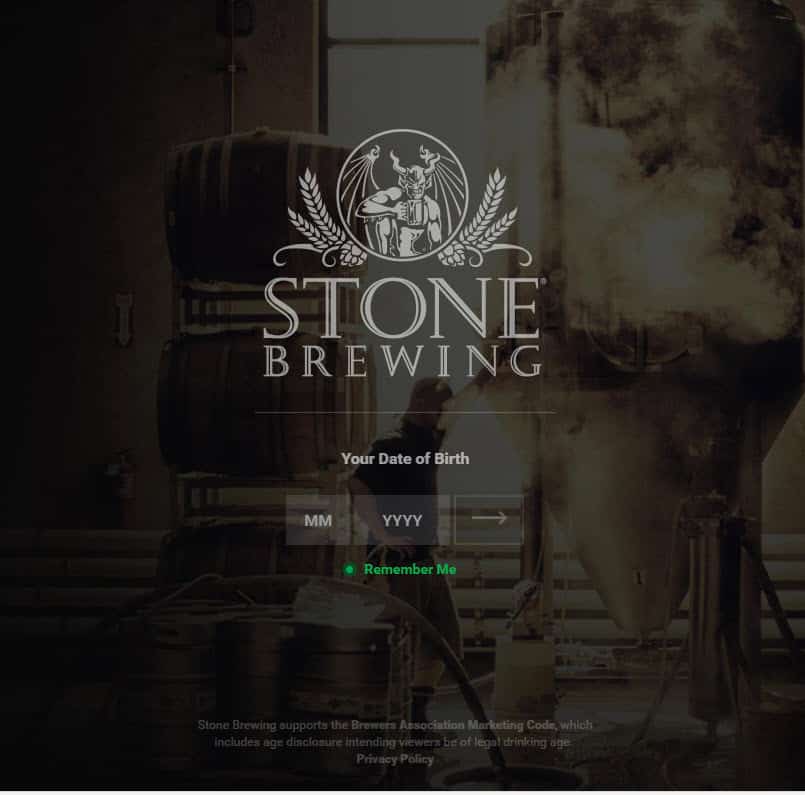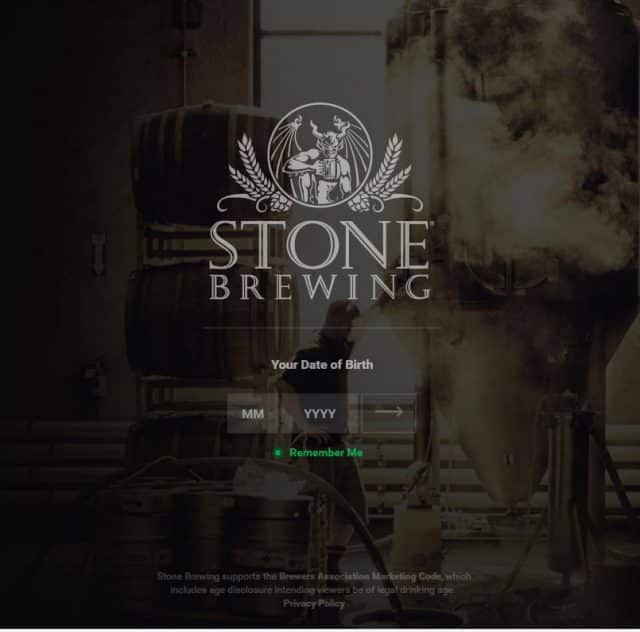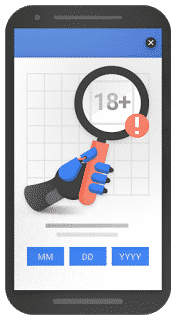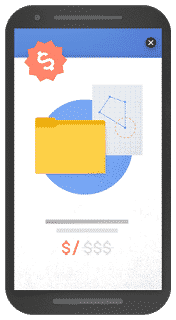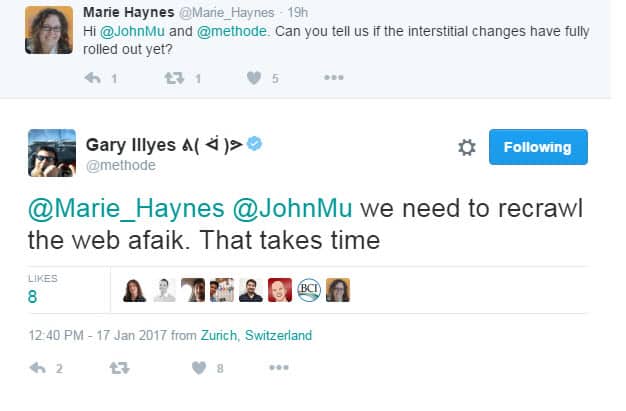Have you noticed the words “intrusive” and “interstitial” thrown around a lot lately in the digital world? You’re not alone – and there’s good reason to notice.
Last August, Google announced in their Webmaster’s Blog how they were going to simplify mobile search results using two updates. The first was to remove the mobile-friendly label that search results with mobile-friendly pages used to display. Google found that 85% of all pages in the mobile search results were mobile friendly, so the label was somewhat redundant.
“To keep search results uncluttered, we’ll be removing the label, although the mobile-friendly criteria will continue to be a ranking signal. We’ll continue providing the mobile usability report in Search Console and the mobile-friendly test to help webmasters evaluate the effect of the mobile-friendly signal on their pages.”
The second change was to address pages that show intrusive interstitials to users.
“Although the majority of pages now have text and content on the page that is readable without zooming, we’ve recently seen many examples where these pages show intrusive interstitials to users. While the underlying content is present on the page and available to be indexed by Google, content may be visually obscured by an interstitial.”
What the Heck is an Intrusive Interstitial?
Intrusive interstitials is quite the alien-like phrase, right? The two words are just a fancy description for an excessively large popup ad that effects a mobile user’s experience. These types of popup ads aren’t your normal 2×4 box that displays at the top or middle of a web page and can easily disappear with a simple click on an “X” button.
Intrusive interstitials tend to block an entire web page and appear during a search result transition on mobile. As you can imagine, this is really annoying for users intending to land on a specific page to access information and are instead faced with a popup blocking the entire mobile page.
The only time a popup like this makes sense is when it’s a website that legally has to specify a user’s age before entering. These are generally beer and alcohol-related websites with age restrictions of 21 years and older.
Some Interstitials Are Okay to Have, Though
Google said as of January 10 of this year, pages with content that wasn’t easily accessible to a user on the transition from mobile search results, aka intrusive interstitial popups, would not rank as highly. Web developers and designers have been left with a choice to either make a design change and abide by Google, or stick to their guns and see what happens.
Lucky for us, Google took some effort to really clarify which kinds of interstitials are “o-kay” and which ones fall into the “penalization” categories.
The interstitials were told are not to be penalized are those that are required by legal obligation, have a login-related purpose, and banners that are easily dismissable like app install banners on Safari and Chrome.
The interstitials that Google said will be affected are the ones that fit into these categories:
- Is a popup that covers the majority of the content after a user lands on a page from search results or pops up during the time a user is visiting a page.
- Forcing a user to have to dismiss a standalone interstitial before they can see the actual page content.
- When the page layout above-the-fold looks like a standalone interstitial and the original content is underneath the fold.
January 10th came and the updates were officially rolled out as we all held our breathes to see what would happen. How many pages were going to get penalized? How many businesses were going to lose rankings because they didn’t change? Did Google even roll it out?
Then, we all loooked to Google for their blog post update:
“January 10, 2017 update: Starting today, pages where content is not easily accessible to a user on the transition from the mobile search results may not rank as high. As we said, this new signal is just one of hundreds of signals that are used in ranking and the intent of the search query is still a very strong signal, so a page may still rank highly if it has great, relevant content. Please head to the webmaster forums if you have any questions.”
Have Websites Been Hit With Intrusive Interstitial Penalties, Yet?
Glen Gabe, a digital marketer with 21+ years of experience, wanted to track the negative impacts of this penalty and see if there was any actual impact since the January 10th rollout. He tracked sixty different websites using mobile popups and has so far found that almost all of the urls where ranking exactly where they were prior to the rollout.
Marie Haynes, a Google penalty expert, reached out to Gary Illyes and John Mu and asked if the intrusive interstitials had actually been rolled out, yet. I’m assuming she was getting the same results as Glen, and not seeing a whole lot of change.
As we wait to see how strong the impact of the penalty will be, if you haven’t already fixed your web pages to follow suit now is the time to do so.
Have you seen an impact on your websites? Comment below with your thoughts on this Google penalty.
